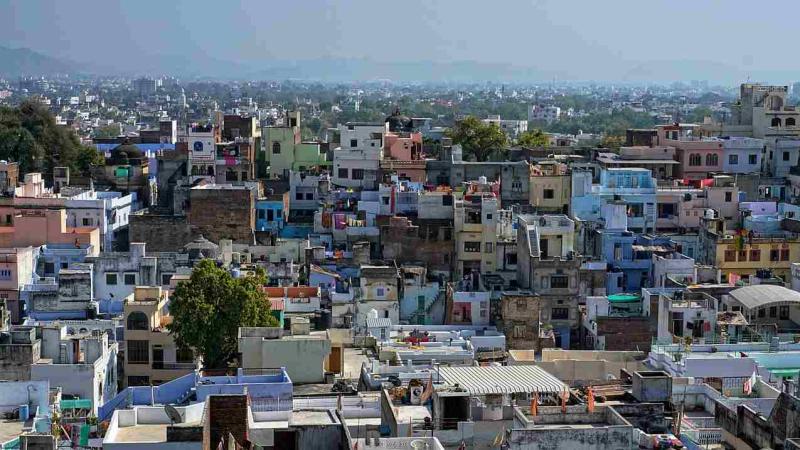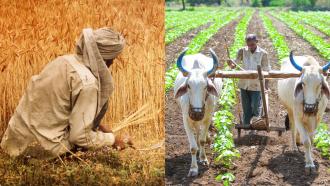
Urban areas in India are expected to grow by 404 million people between 2014 and 2050, says a report by the United Nations. With growing industries, increasing population and expanding infrastructure, cities are now overflowing into surrounding regions, creating urban sprawls—the unplanned, uncontrolled spread of cities to suburban and rural areas. Agricultural lands, bordering the cities, mostly bear the brunt of this expansion due to encroachment and stress on available natural resources. Thus, monitoring and controlling the growth of cities helps to manage resources sustainably.
In a study published in the Egyptian Journal of Remote Sensing and Space Sciences, researchers from the University of Madras and ICAR-National Bureau of Soil Survey & Land Use Planning, have estimated the urban sprawl of Nagpur, a city in central India. They have used maps, and temporal satellite remote sensing data of the city and have compared this data, collected over the years, to find the trends in the growth using geographic information system (GIS) technique.
Urban sprawl into productive agricultural land changes the availability of water, and in many cases, leads to flooding since water flow is hindered mainly by buildings obstructing its flow into larger water bodies thus inundating land. Hence, it is essential to monitor this sprawl to identify areas that are stressed due to the development and to make informed decisions about land use.
“We noticed that low-density settlements [with about 40 houses per hectare] come up in wastelands in the periphery of urban settlements and agricultural areas, where the local bodies need to make proper plans for optimum utilization of land and provide all urban amenities”, says Dr GP Obi Reddy, researcher at the National Bureau of Soil Survey and Land Utilisation Planning.
The researchers analysed the trends in population growth over time by collecting demographic data, such as changes in population and socioeconomic details, from 1951 till 2011 for every ten years. Alongside, they used satellite images from Landsat 5 Thematic Mapper to map and monitor the urban sprawl. They also extracted features indicative of urban sprawl, such as urban settlements and infrastructure development, at different sectors in the city of Nagpur for the years 1991 and 2010. The researchers also digitised the urban development zone maps, developed by the Nagpur Municipal Corporation, for their comparative study.
The researchers classified the area of the city and its surroundings based on various land uses like residences, industry or agriculture, and land covers such as trees, grass, water or concrete construction. They did so by using a technique called object-based image identification (OBIA), which uses pattern recognition and image analysis where smaller objects in images are merged to form bigger ones that are homogenous in shape and colour.
“Using OBIA technique, one could analyse the satellite data more precisely as it considers a group of similar pixels as an ‘object’ in an analysis, instead of considering individual pixel”, explains Dr Reddy. The researchers then classified the different land use types such as urban vegetation, mining area, dense, medium and low settlements, double and single cropped area, scrublands, infrastructure, and fallow land.
The researchers found that from 1936 to 1976, the urban areas have increased considerably from 2272 hectares to 7855 hectares with nearly a 71% increase in all the directions of the city. This increase was mainly seen along the highways of Wardha, Bhandara and Amravati. The analysis also reveals that medium settlements, with about 40-100 houses per hectare, and dense settlements, with 100 or more houses per hectare, were more predominant in the southern and northern parts of the city.
Along the periphery of the city, agricultural lands with single or two crops in a year were predominant in the eastern, northern and southern parts. Mega establishments such as the Multimodal International Hub Airport at Nagpur (MIHAN) and International Airport were the reasons for the urban growth in the eastern and southern side of the city, the study found.
There had been a considerable decrease in the area under scrubland—land dominated by shrubs— from 16.4% in 1991 to 5.5% in the year 2010. Scrublands are now presently confined to southern and northern parts of the city. The researchers also noted that during the urbanisation process, an area of 2806 hectares under double cropping and degraded scrublands had been converted to housing or industrial needs.
On a brighter note, the vegetation in urban areas had increased between 1991 and 2010 from 321 hectares to 583 hectares. Moreover, there had been an increase in the area underwater due to the conversion of single crop areas and uncropped lands into water bodies.
The researchers attribute the urban sprawl in Nagpur to the inward migration of people from villages to cities for better education, employment, recreation and living standards. The findings of this study play a pivotal role in careful urban planning for sustainable development.
The researchers plan to use high-resolution data and incorporate zoning policies for prohibition or permission of developmental activities and development plans to further improve the accuracy of the results.
“It will also help in urban utility planning, to assess environmental impacts from the changes that occurred through urban sprawl, and preserve socio-environmentally important areas”, conclude the researchers.






